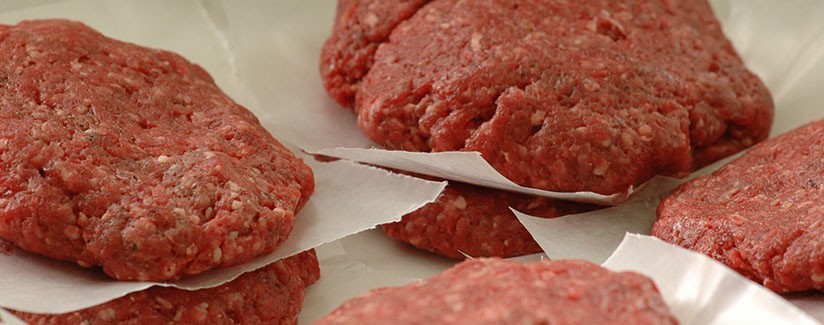
The Truth About “Pink Slime”
03/20/2012
Recent news reports have claimed ground beef is treated with ammonia and other chemicals. With many people wondering if their beef is safe, we spoke to Dr. James Dickson, Iowa State University, about this “pink slime” and its implications.
What is “lean finely textured beef?”
Dr. Dickson:
Lean finely textured beef is lean beef that is taken from trim (the part of the beef carcass that comes after you cut off the steaks and the roasts, etc.), and is used mainly for hamburger. The particular type of trim that goes into lean finely textured beef has a very high fat content. So normally, there would be no way to recover the lean beef out of these trimmings. This process is an efficient way of separating out the lean muscle tissue from the fat. The end result is a product called lean finely textured beef, which is about 95 percent lean beef.
Lean finely textured beef is a good description of exactly what it is. It’s beef. When people come up with these other terms, like ‘pink slime,’ it is not accurate. Some stories have said this meat is unfit for human consumption, but that is not accurate, either. It is meat that has come from USDA-inspected operations. It is not sludge. It is meat that without being processed would go to waste. Yes, lean finely textured beef is produced at a lower cost. But the bottom line is that it is beef.
How is it processed?
Dr. Dickson:
The trimmings are brought back up to approximately 100 degrees F, which is close to the body temperature of live cattle. It then goes through a series of separators – some of which are centrifugal in nature – similar to the processes in dairy operations that separate the cream from the skim milk. The end result is that is separates out the fat.
Why is it treated with ammonium hydroxide?
Dr. Dickson:
Using ammonium hydroxide is a very specific process that was developed by Beef Products, Inc., to make beef safer. It is used as a gas. It is not a liquid and it’s not a spray. It’s actually injected as a gas into the meat, while the meat is being processed. The gas actually kills a lot of the harmful bacteria that could be present. It’s important to remember that meat isn’t sterile. And no matter what we do, meat will never be sterile, so using this gas is a benefit to food safety and improves the safety of the lean finely textured beef.
Is this process of using ammonium hydroxide safe?
Dr. Dickson:
Yes, it’s safe. This process went through a very extensive review by USDA. It went through the same type of review that any other process proposed to USDA would go through. The process was approved about 20 years ago, so this isn’t something new, this is something that went through rigorous review and was approved by USDA.
What’s the difference between household ammonia and ammonium hydroxide?
Dr. Dickson:
In this process, ammonium hydroxide is injected as a gas, and the gas dissipates out of the product. There are videos of liquid ammonium being poured into ground beef. This is not at all an accurate representation of the processes that use ammonium hydroxide. It is not even close. This process refers to gas being injected into the product. The residual ammonium is well below the maximum level that USDA set. No meat processing practices use liquid ammonium directly added to or sprayed on the product.
What about other chemicals in meat? Should we be concerned about those chemicals?
Dr. Dickson:
These chemicals are processing aids, and they are used in extremely small quantities. And they are not used in all meat products. Some chemicals have very specific uses for certain types of products. The USDA definition of processing aid is something that’s used in such a small quantity that it doesn’t leave a residue beyond a certain limit. When chemicals are used in meat processing, they are used at very low levels.
Organic acids such as acetic acid, lactic acid, and citric acid are other common solutions used on meat products. These are naturally-occurring acids and help keep meat safe.
Each chemical has a very specific application. For example, antimicrobials are used to kill specific microorganisms that might make people sick. They are approved for specific products in very specific amounts, and there are only certain applications for them. Again, we use them because meat isn’t sterile. And no matter what we do, meat will never be sterile, and an antimicrobial makes it safer.
For more information about the safety of ground beef, check out the USDA’s Food Safety Information.
For reference, here are two videos – one from Jamie Oliver’s Food Revolution where the phrase “pink slime” was created, and a response video from BPI (the company which developed the process) discussing how lean finely textured beef comes to be.
We want to know your thoughts about lean finely textured beef – share them in the comments below!
For more information about “pink slime” in chicken, check out this post.
“Ground Chuck” by Ernesto Andrade is licensed under CC BY ND.


























